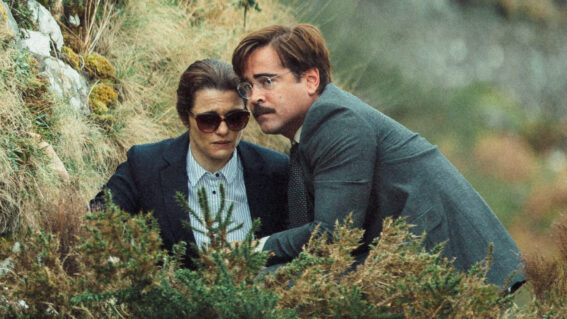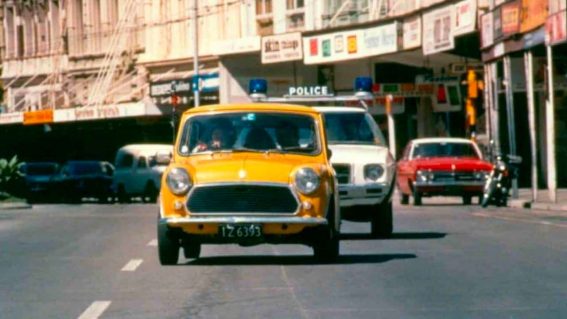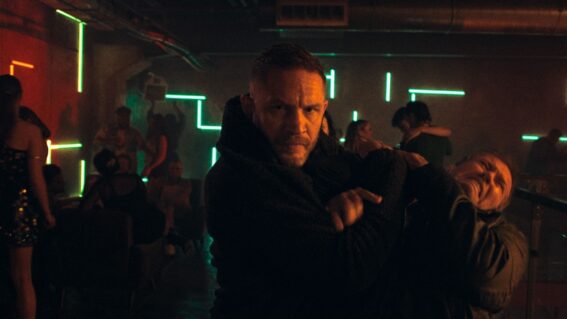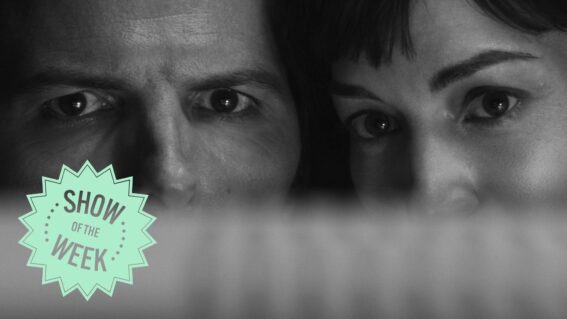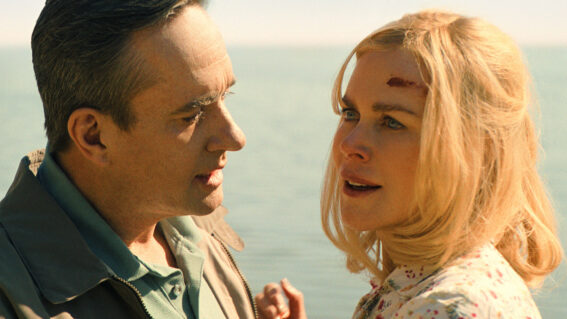Operation: Rambu & NZ’s international action star you’ve never heard of
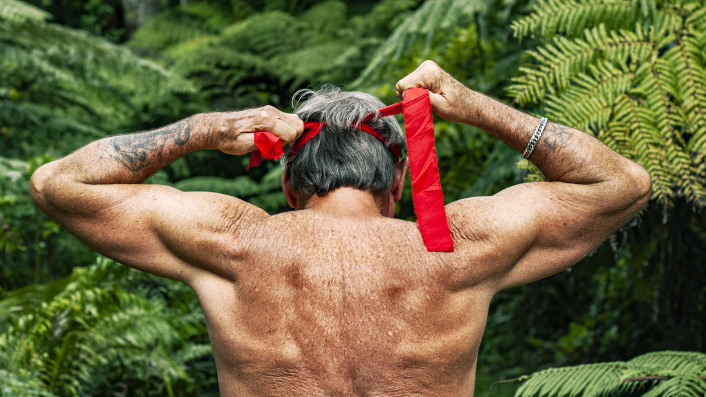
New Loading Docs short shares story of the Kiwi star of “Indonesian Rambo”
Part of this year’s Loading Docs collection of documentary shorts, Operation: Rambu! is described as follows: “After a party-fuelled decade of B-list action movies, the ‘Indonesian Rambo’ abruptly disappeared from the silver screen. Can destiny provide the stage for this Kiwi’s triumphant return?”
We had many, many questions – and put some of them to Steve Austin (writer and director) and Rajneel Singh (producer). Watch Operation: Rambu! below and read on to find out more about it…
FLICKS: When and how did you first become aware of Peter’s 80s film work?
STEVE AUSTIN: I’ve long been a fan of obscure cult movies, crazy international action films and b-grade cinema, but I first heard about Peter’s film history only about four or five years ago when my good friend and fellow weird movie enthusiast Doug Dillaman showed me The Stabilizer. It took another discussion online with other fans to realise that Peter was a Kiwi, but we all assumed he was either dead in a ditch from too much partying or had hermited himself in obscurity, never to be heard from again.
Cut to the beginning of this year, Doug and I were considering curating another of our living room movie nights and we automatically agreed that the time was nigh to watch The Intruder (aka “Indonesian Rambo”), so we lined it up and did a bit of googling. I stumbled upon Peter’s recently updated Wiki page and realised that he’d been back in Tauranga for a while. I dug further and, after a couple dead ends, found him via his agent who was super enthused to get his story out to the world. Hey presto, I was suddenly talking to him and he was more than keen to tell his story to an interested ear.
RAJNEEL SINGH: I had seen The Stabilizer maybe 10 years ago, recommended to me as one of those “so bad it’s amazing” films and it was distributed by Troma which kind of telegraphed what to expect from it. But at the time, I had no idea who Peter O’Brian was or that he was a Kiwi. In fact, none of it coalesced for me until the day Steve literally messaged me to ask if I wanted to produce his short film and then all the disparate bits of knowledge about Peter suddenly lined up. That’s the moment when I realized that the Peter O’Brian in The Stabilizer was the New Zealander who also was the Indonesian Rambo and that he had been in another six films as well. And of course that he was still alive and kicking around in Tauranga.
How do his films stack up when watching them today?
SINGH: I grew up watching Bollywood films as a kid (and specifically the low-budget 70’s and 80’s Bollywood), so for me, Peter’s films ascribe to a style that I was very familiar with. In saying that though, Indonesian and Bollywood films of that era differ in fascinating ways for me. You can watch an 80’s Bollywood film today and what is apparent is just how dated their ideas of what’s fashionable, hip, exciting or dramatic has become, but technically they are quite competently-made despite their tiny budgets and shameless cost-cutting.
Peter’s Indonesian films feel like a flip-side to that, where their ideas of excitement and action and stories feel very ripped from the headlines and immediate and you could still watch that today and get the context of what’s going on… but technical competence in the filmmaking is just outright bizarre. Indonesian films, especially movies like The Stabilizer and The Intruder are like messed-up remakes of Road Runner and Bugs Bunny cartoons from another planet. Huge ideas and huge ambition, but seemingly no ability to tell what sells and what doesn’t onscreen; acting, stunts, props, story ideas, it’s all over the place and weirdly paced.
And to be honest, it’s awesome! If you know a bit about filmmaking you can see what they’re aiming for and how they miss their mark, and if you don’t know anything about filmmaking then you’re just exposed to these weird, warped, Bizarro-universe films where they take as many left-hand-turns as they take right-hand ones. It’s pretty entertaining in places.
AUSTIN: By conventional standards of quality, they’re what most folks would consider to be “bad” or “trash”. However, taking into account the budgets that these filmmakers had, the lack of support the Indonesian government provided creative endeavours at the time and the sort of imagination they used to get around production constraints, they’re super entertaining and very bold.
Few other directors in world cinema would consider driving a motorbike or a jeep through a wall to be a useful plot device or turning-point, but they’re a very common theme in most of these movies. That’s what makes them such a joy to watch.
I really consider Pete’s first two films—The Intruder and The Stabilizer—to be among the top-tier of Indonesian cult 80’s cinema.

Which, if any, of his stunts would you consider as dangerous, even bordering on insanity?
AUSTIN: Because he did them ALL himself, I would say ALL OF THEM! However, there are two that really stand out:
The helicopter stunt from The Stabilizer is the most consistently bonkers, both in conception and execution. Having to ride a motorbike up a hill, jump from it and cling onto a helicopter shoe, fight with the bad-guy inside, take his gun and then drop several hundred feet into a lake—that takes either sheer guts or pure craziness. The way Pete tells it, it was difficult but ultimately no real problem for him, but it shows onscreen that this was a very complicated set-piece with very little in the way of safety involved.
The other craziest stunt was allowing Cynthia Rothrock to kick him in the head 13 times in Angel of Fury because she couldn’t choreograph it convincingly for the shot. That Pete survived that one with his brain-cells intact is pretty incredible.
I’m really glad we’ve managed to represent them both in the short.
SINGH: The motorcycle and vehicle stunts just amaze me, personally. I know Peter knew how to ride motorcycles, but it’s a big ask to just say to some random guy who you literally picked up off the street: “Dude, go ride this bike off that ramp and onto the side of a helicopter” or “ride through this wall, into these other dudes, and then up to the top of a warehouse and jump it back to the ground.” That’s nuts and it’s Peter doing all of them.
There’s a particularly guano-loco sequence in The Intruder where Peter tries to rescue the damsel in a tuk-tuk, like decades before Tony Jaa did his tuk-tuk chase, and you can see Peter jumping them over dirt ramps and ponds and doing a wheelie and more. That’s the star of their movie and they’re just throwing him around like any old stuntie and he doesn’t even have any training on how to do stuntwork. Crazy.
Did Peter take much convincing to take part in your short?
AUSTIN: Not at all. I didn’t even need to convince him to open up to me when I made that initial phone call. Pete is happy to talk about his experiences almost endlessly and it seems he’s just been waiting for someone—anyone—to come along and show an interest in what he has to tell. Now that he has an agent and is wanting to get back into the limelight again, selling him on the idea of doing something more than an enthusiastic fan piece was pretty easy too.
SINGH: From my dealings with him he was keen and he was primed and ready for us. You don’t normally worry about makeup and stuff for documentaries, but he had roped his daughter into doing hair and makeup and he’d been to the gym to get himself back into shape. He wanted to really embody the Peter O’Brian of the movies as much as he could for us and that was just awesome.
What was he like compared to your expectations?
SINGH: I kind of expected a sort of gruff, no-nonsense, “my movies are behind me” sort of fella from the Bay Of Plenty, but turns out Peter was charming and charismatic, still the consummate performer and very eager to revisit his films and talk about his future as an actor. Peter still had showbiz in him, despite his hiatus from the spotlight and the industry.
AUSTIN: I was expecting a possibly crazy recluse, as I’ve met a few other retiring gun-shy b-movie actors like that before at festivals, but when Raj and I first went down to Tauranga to meet him he was so warm and welcoming, piled us with vegetables from the community garden he was working in at the time and opened up his home to us.
At nearly retirement age, I thought that he might have slowed down a bit, but aside from an injury to his foot about a decade ago, he is still physically fit and has so much energy for telling stories or throwing himself into anything. Pete is a real force of nature but also a genuinely giving and warm gentleman.
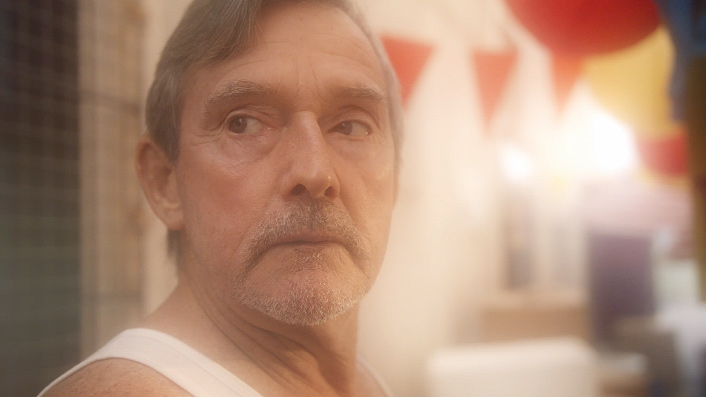
Did your project evolve significantly through the production process?
SINGH: It went through many permutations. The nature of documentary is always that you discover things about your subject that suddenly seem more interesting than the idea you originally had, but you gotta take a step back and remind yourself that just because an idea is fresher doesn’t mean it’s better. In the end, I personally set out to just let New Zealand know that this guy exists and his past and his movies are absolutely incredible and really you can’t squeeze much more of that into 8 minutes. So—for me—I think we delivered what we promised.
AUSTIN: Originally, we started out thinking I’d write Pete an audition piece framed around his past experiences, aimed at his future dreams, and that would be how the short would end. But because he has so many incredible stories to tell and so little time to get them out, I decided it best to let him tell those and fold that performative idea into the main body of the work to showcase his abilities within the recreations, flashbacks and theatrical sequences. I hope the choices I’ve made have led to something bold and entertaining that makes people want to find out more about Pete and his films.
How did the Loading Docs format help or challenge your storytelling?
AUSTIN: It has been an absolute pleasure to have had Loading Docs’ support all the way through this process. I might have actually made the film without any funding, but I suspect that would have ended up looking like just another fan enthusiastically waving a mic in Pete’s face, so having the budget and the freedom to get creative with his story has been really exciting for me.
SINGH: Loading Docs was incredibly helpful for us. They took care of so much of the admin and so much of the headaches and left us alone to just be filmmakers. And that is exceptional and also just doesn’t happen if you try to make your film some other way. In terms of the digital platform and the running time, I’m personally inspired by video essays so it wasn’t hard for me to get my head around what the documentary could be with format as it was.
What was it like to shoot Peter in character in re-enactments?
AUSTIN: I was very nervous that he’d be a bit resistant to a lot of things we’d created, but he really reveled in us taking some artistic license with the situations! Actually, the only thing he was very particular about was getting the food right; fried rice is made very differently in Indonesia to the way we experience it here, so Pete gave us a full recipe which I’ve since tried and it is delicious!
SINGH: As Producer, I kept my nose out of it and ran around making sure people were fed. But I was fascinated to see Peter in-character as himself in our footage. I’m sure that was a new experience for him!
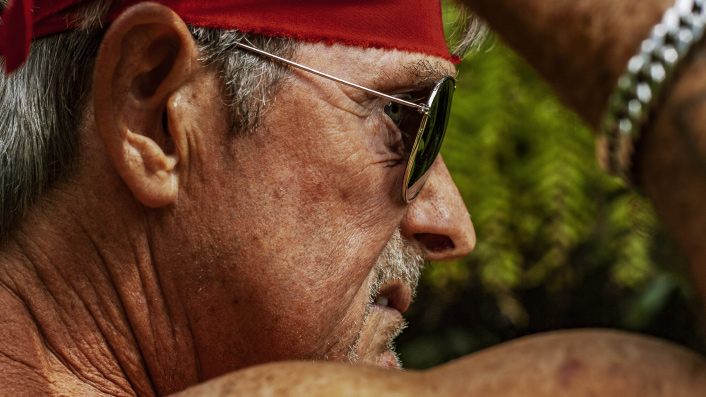
What would you like to see happen for Peter now?
SINGH: The world is still riding the nostalgia train hard and there’s a lot of people who’ve put in their time in the past who are now reaping the rewards now as their art is put under the spotlight again. I’d like Peter to start to enjoy some of that. He has an international fanbase and his movies have their place in the general oeuvre of B-movies from yesteryear. Peter can do conventions and film festivals and interviews and press and just get more people appreciating what he accomplished and how many more unsung stories are out there about people who did amazing things in the film industry.
And hopefully, he can leverage that as a way to get back into acting on screen. That would be his ultimate goal and we’d love it if he could do that off the back of our documentary.
AUSTIN: The first thing I’d like for him is to meet some of his core fans. He seems pretty unaware of the extent that people still have an enthusiasm for his movies, so I’d really like to take him to a film festival, screen my short and maybe a print of The Intruder and get him really mixing into the genre film circuit.
While we were making this short he expressed a desire to get his stories all down on paper and I’ve encouraged him to do so, so it would be great to see a memoir from him sometime in the future too. Of course, I’d also love to see Pete get cast in a big-budget movie next to the likes of Stallone or Bruce Willis. I reckon he’s still got the chops if he continues to put the work in.
Do you think there are many other unsung Aotearoa heroes like Peter out there?
SINGH: I’m absolutely certain. Peter embodies that classic Kiwi nature that we all have about not blowing our own horn too hard and it’s for that reason that I think Peter’s managed be hidden away for so many years. He has fans—lots of international fans—yet he has no idea how much they’re interested in him or his films to some degree. New Zealanders are globe-trotters and we tend to get stuck into just about anything that takes our interest and I’m sure there are at least another thousand stories like Peter’s out there that you just don’t know about. Ordinary people doing extraordinary things and being very quiet about it until a nosey documentary crew comes knocking on their door.
AUSTIN: Yeah, I’ve heard rumours of at least a couple of other Kiwi stunty/actor-types out there who’ve worked on movies around Asia in the 80s-90s who have some similarly nutso stories to tell. I hope this short inspires them to emerge from the woodwork and tell their tales.
Click here to see all this of year’s Loading Docs shorts

